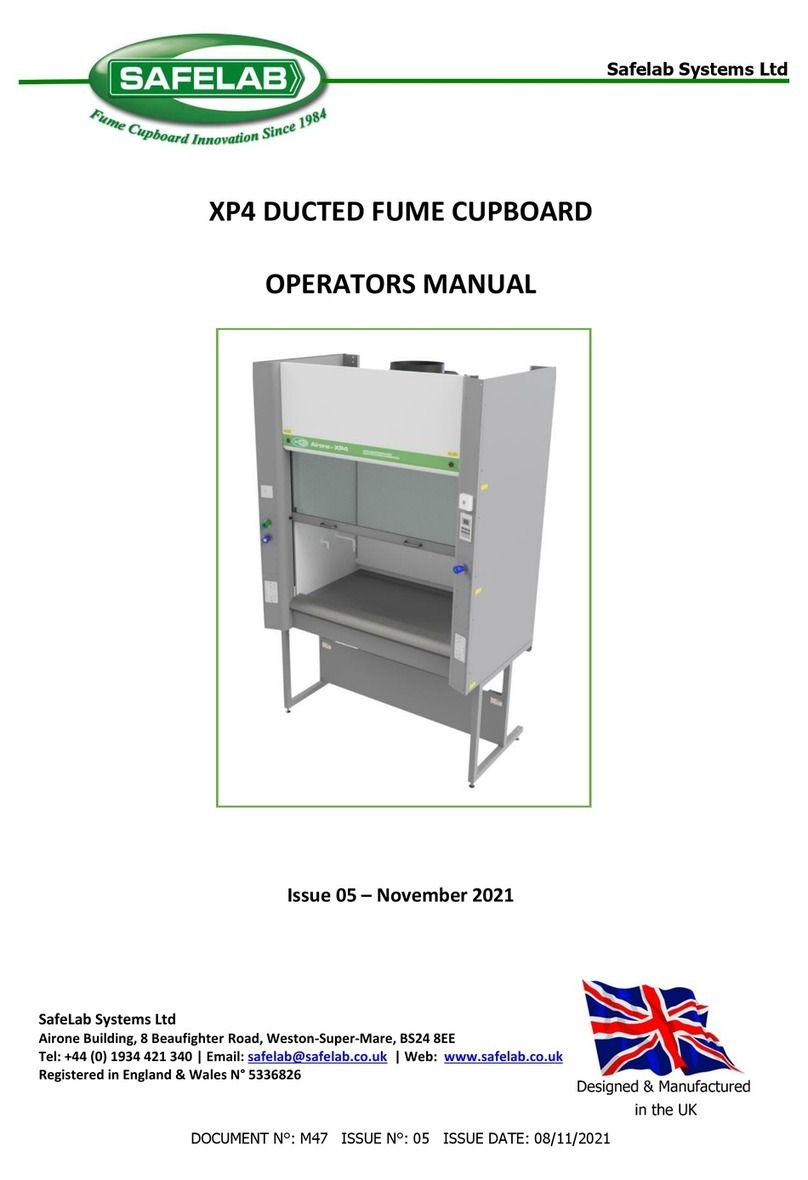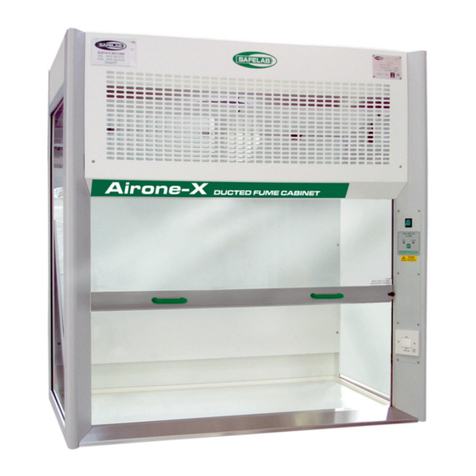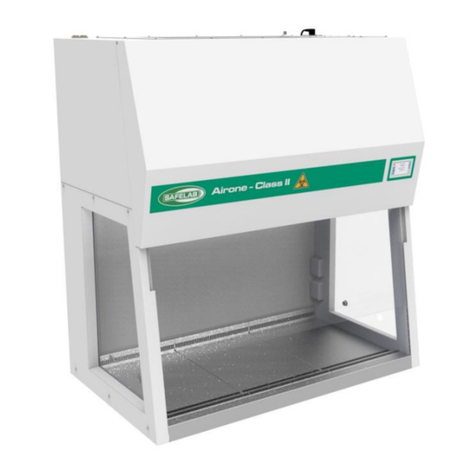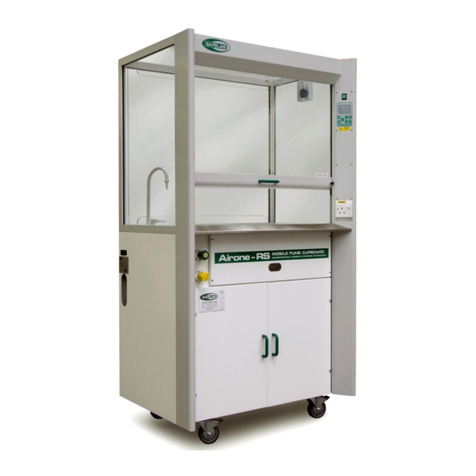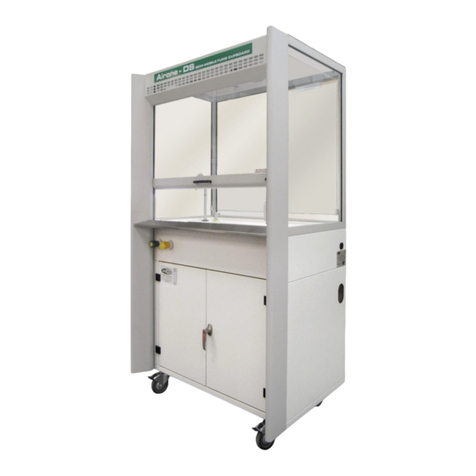
DOCUMENT NO: M21 ISSUE NO: 04 ISSUE DATE: 26/08/09
CLEANING
It is recommended that the AIRONE Fume Cupboard or Work Station is left
running during any cleaning procedure and that suitable protective clothing, face
mask, gloves and safety glasses are worn. Clean glass, acrylic, metalwork and
work surfaces with a mild detergent solution. After cleaning, wipe down all sur-
faces with a damp cloth.
WHAT IF ? .... AND FAULT FINDING.
1. What if I can smell the vapours or gases being used in the procedure?
Filters have a high efficiency but, because the nose is very sensitive, the
residual gases passing through the filter may sometimes be smelt, even
though their level is not hazardous. If the gases are causing distress, the
operation should be finished and the degree of filter saturation monitored.
2. What if I can smell the vapours or gases being used in the procedure,
but I have checked the filter performance and it is satisfactory ?
Check siting of the cabinet to ensure that nothing is being allowed to escape
out through the sash. Fume containment is easily impaired by draughts from
windows, doors or fan heaters and air vents.
3. What if there is a release that the filters of the Airone 1000RS cannot
contain?
If the initial chemical hazard analysis or risk assessment (under COSHH)
has been carried out correctly resulting in correct selection of appropriate
types of carbon filters followed by weekly air sampling and filter monitoring
checks this is unlikely to occur. In case it does happen, due to accidental
release of gas or vapour or an unexpected spillage, then leave the fan
running and evacuate the area. Subject to the hazard assessment and local
considerations, it may be that personnel with breathing apparatus would
have to return to open windows and ensure that all hazardous vapours or
gases had been dispersed.
Always keep a set of replacement carbon filters in the laboratory available
at short notice for such an event.
WARNING:
If a spill exceeds the capabilities of the Airone 1000RS, it is likely to exceed
the capabilities of carbon filtration face masks. This means that only an air
or oxygen cylinder based breathing apparatus could provide adequate
protection.






